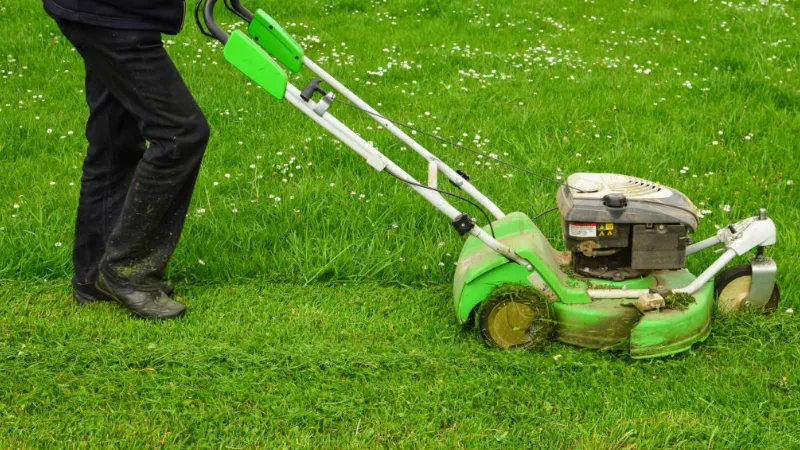Discover the different ways to propagate snake plants: by leaf propagation, by division, and by pup. Below will also give you effective care tips.
Propagating snake plants is easy, even if you just have a single leaf cutting. Read on for more detailed information.
What is a Snake Plant?
Snake plant (Sansevieria trifasciata) is one of the most common and low-maintenance houseplants. These succulents, also known as Sansevieria plants, have a height range of six inches to twelve feet. Snake plants have dark-green leaves that are sword-like in shape and often feature color variegation of yellow borders and light-green streaks.
The plant is a member of the Asparagaceae family—as in the vegetable asparagus—first cultivated in China. Because they can remove toxins like formaldehyde and benzene from the air, snake plants are excellent indoor plants.
Although not deadly, snake plants contain toxins that can affect people and pets if consumed.

How to Propagate Snake Plants?
There is no superior method among these three, and they will all likely produce excellent results. Your decision will be influenced by the plant you start with and your growth objectives.
Leaf Propagation
One of the most popular methods of propagation, leaf propagation is appropriate for both young and mature plants. A single long leaf can produce a number of cuttings, all of which will eventually develop into mature, healthy plants.
- Identify a Leaf
Decide which leaf you want to use to multiply first. It ought to be robust, thick, and disease-free. Longer leaves will yield more cuttings but shouldn’t be stretched out or twisted, indicating signs of growth issues.
- Remove the Leaf
Grab your shears or sharp knife and remove the entire leaf at the base of the plant, as close to the soil as possible to stop the plant from looking untidy.
- Split the Leaf
Cut the leaf into 4-inch sections, marking the top of the cutting on each one to indicate the direction of the root growth. This will prevent you from planting the cutting upside down, which would obstruct potential root development and result in rotting.
- Plant the Cuttings
Then, fill a pot with your chosen propagating mix and bury the cuttings just into the soil until they stand up on their own. Since they will eventually need to be transplanted, you can plant multiple cuttings in the same pot.
- Water the Cuttings
Water thoroughly after planting to moisten the soil and encourage root growth. Make sure the drainage holes are clear of water to prevent any potential waterlogging.
Propagating a Whole Leaf
If you want to turn your propagating efforts into a design feature while you’re busy, you can use a whole leaf and propagate in water. This display looks much better than a few compact cuttings planted in a pot, despite the additional maintenance required to change the water.
Use the same procedure as before to completely remove the leaf from the base. Then, fill a vase or glass with a couple of stones or pebbles to hold the cutting in place and fill the bottom with water. Place the cutting inside the vase and in a well-lit location.
This approach not only looks good, but it also enables you to keep a close eye on root development. You can transplant the plant as soon as it’s prepared and then take a fresh cutting to bring inside.

Division
For a plant that has outgrown its current pot, division-based propagation is ideal. It may be bulging slightly at the sides or has roots growing through the drainage holes, indicating it is in need of some extra space. Dividing and repotting go hand in hand and allow you to complete two messy tasks at one time.
Remove the Whole Plant
Start by removing the plant from its existing pot. Gently squeeze the sides to release the roots and compacted soil if there is any resistance. When the plant is free, loosen the roots and remove some soil around the base to get a closer look at the divisions. To make the crown more visible, you can also rinse it with water.
- Identify Where You Will Divide
Once the roots are visible, identify points of division. You should be able to cut cleanly into the crown, with either side of the cut having plenty of roots left over to continue growth. If the plant is big enough, you can divide it in two or select several divisions.
- Split Up the Roots
With a clean and sharp knife, cut into the crown to separate the sections. You can also pull them off with your hands, but a clean cut is more likely to heal quickly and allows you to be precise with the separation.
- Repot the Plants
Once the sections are separated, simply repot each division into a container with succulent potting mix. One of the divisions can be replanted into the previous container because it should be small enough not to fill the entire pot.

Pups
Your snake plant will likely do all the hard work for you if given the proper care and environmental factors. Pups are the miniature versions of these succulents that grow right next to the parent plant. They naturally spread in this manner.
We can take advantage of this process by removing those pups and replanting them in a different container to continue growing into a full plant.
Depending on your soil level and how deep the division is, you may be able to do this by simply cutting into the plant from above the soil, eliminating any need to remove the plant from its pot. However, if you want to see where the root growth begins and ensure a clean removal, repotting is recommended.
Following the same steps above for division, identify any pups that are viable for replanting. To grow well on their own, they should have a few leaves and many roots. Keep as many roots with the pup as you can by snapping these off the parent plant or cutting them off with a sharp knife.
Grab a small container and plant the pup on its own, leaving enough space for the rapid expansion to come.

How Long Does a Snake Plant Take to Propagate?
Although new snake plants are simple to grow, they grow slowly and can take up to eight weeks to sprout new root growth. Rhizomatous division, which is a technique for growing new plants by removing a section of the rhizome—the plant stem that grows underground—and replanting the new section to grow elsewhere—is generally the method by which these plants reproduce the quickest.
However, the most hands-off methods for propagating this plant type are rooting the snake plant in water and planting a cutting.
How to Care for Snake Plants?
Follow these steps for caring for your snake plant to help this low-maintenance specimen thrive:
- Stage near indirect light. Established snake plants are excellent indoor plants because they can thrive in a range of lighting conditions. During the day, they prefer direct, bright light, but in the shade, they can tolerate low light.
- Avoid overwatering. Refrain from watering your snake plants too much, as overwatering can lead to root rot. Spritz your snake plants with a little water from a spray bottle every few days instead of wateringthem deeply.
- Fertilize monthly for new growth. Snake plants require no fertilizer. Applying diluted houseplant food to the potting soil once a month throughout the growing season will help your newly propagated plants grow healthy leaves.
- Allow the rhizomes to thrive: When the rhizomes in the pot are crowded, Sansevieria plants flourish. The plant may appear to need repotting, but it can withstand being crowded and becoming root-bound.

FAQs
Some common snake plant propagation questions include:
When Will the New Snake Plant Start Growing?
In the right conditions, the new plant may take six to eight weeks for root growth.
Without enough indirect light, new growth may take longer for indoor plants.
Why Won’t My Snake Plant Grow?
It’s possible that your new plant isn’t receiving enough direct sunlight, water, nutrients, or light.
Follow these tips instead:
- Give the propagated plant enough bright, indirect sunlight.
- Prevent root rot and excessive irrigation. Just water when the top two to four inches of soil are dry.
- Invest in a fresh pot with a drainage hole.
- Use Rosy instead of regular soil for snake plant care; it is nutrient-rich and well-draining.
Is It Easier to Use Soil Or Water to Propagate Snake Plants?
The fact that all you need to start growing snake plants in water is a jar of water, sunlight, and snake plant cuttings makes this process perhaps simpler. However, this method comes with a slightly higher risk of rot. Maintaining your cutting in a sunny location and changing the water frequently (we suggest once per week) for at least two months will help you avoid developing the dreaded rot.
What is the Fastest Way to Propagate a Snake Plant?
Cuttings of snake plants take one to four months to establish new roots, and even longer for new leaf growth to appear. If you want to propagate a snake plant faster, try dividing it instead of propagating from cuttings. (You can preserve any variegated coloring your plant may have by propagating it by division.)
When is the Best Time to Propagate a Snake Plant?
As long as you give snake plant cuttings bright light (but keep them out of direct sunlight as they grow), you can propagate them at any time of the year. For best results, keep them in a room where the temperature is consistently above 45°F (and ideally between 65°F and 80°F).
Summary: How to Propagate Snake Plants?
The ease of maintenance makes snake plants a popular choice for indoor plants.Discover the different ways to propagate snake plants: by leaf propagation, by division, and by pup.
If you have any questions, please leave a comment. My Prime Home tries to give you the best home improvement information. Thank you for reading.



